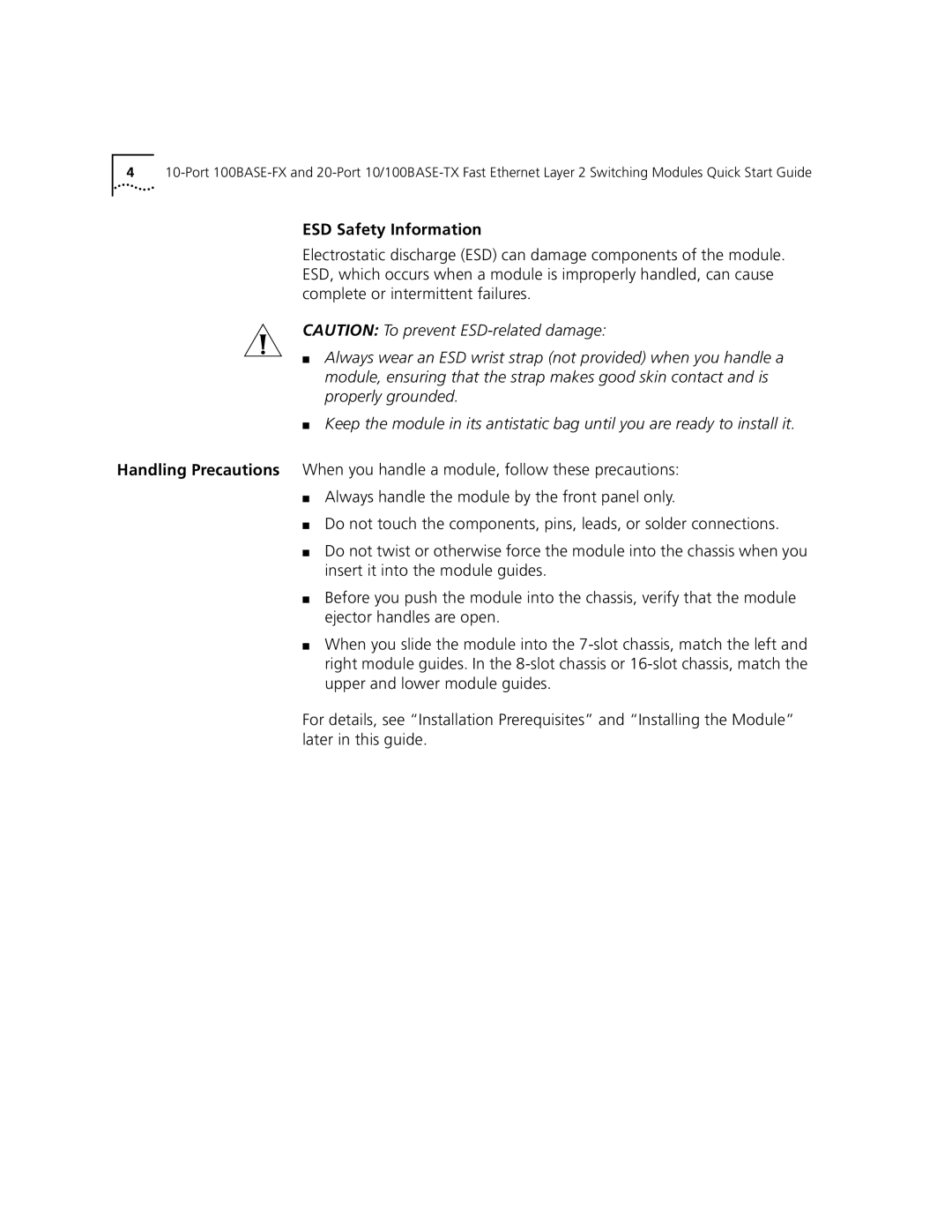100BASE-FX, 10/100BASE-TX specifications
3Com 10/100BASE-TX and 100BASE-FX are network technologies that played a pivotal role in the evolution of Ethernet networking. As part of the Fast Ethernet standard, these protocols allow for the transfer of data at high speeds, which has benefited various industries and residential environments.10/100BASE-TX, often referred to simply as Fast Ethernet over twisted pair, can operate at both 10 Mbps and 100 Mbps speeds, providing flexibility for network installations. This dual-speed feature is facilitated through the use of Category 5 or higher twisted pair cabling. With the ability to automatically negotiate the optimal speed, 10/100BASE-TX allows devices to communicate effectively in diverse network environments, minimizing compatibility issues.
One of the standout characteristics of 10/100BASE-TX is its ease of installation. The use of twisted pair wiring—the same type often used for telephone lines—reduces complexity and lowers infrastructure costs. This technology also supports the use of various physical layer standards, making it adaptable for different network architectures. Power over Ethernet (PoE) capabilities are an added advantage, allowing both data and electrical power to be delivered via the same cabling, simplifying setups for devices like IP cameras and wireless access points.
On the other hand, 100BASE-FX represents Fast Ethernet over fiber optics, providing a different solution for high-speed networking. Operating at 100 Mbps, it is particularly suited for long-distance data transmission, capable of distances up to 2 kilometers using multimode fiber and up to 20 kilometers with single-mode fiber. This makes 100BASE-FX an ideal choice for interconnecting different buildings within a campus or for connecting remote offices.
In terms of technology, 100BASE-FX utilizes light waves to transmit data, resulting in lower attenuation and immunity to electromagnetic interference, a major advantage in environments with substantial electrical noise. This optical technology enhances security as fiber optics are inherently more difficult to tap into without detection.
Overall, both 3Com's 10/100BASE-TX and 100BASE-FX are significant in their contributions to networking technology. They offer unique features that cater to distinct networking needs, whether for short-range, flexible deployments using copper cabling or for long-distance, high-capacity deployments using fiber optics. Their continued relevance speaks to their robust design, versatility, and reliability in a rapidly evolving technological landscape.

